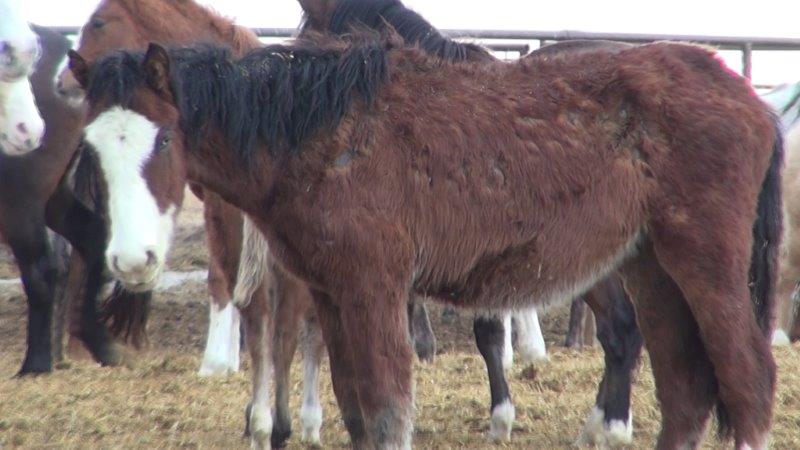Canada | Alberta | Bouvry Slaughterhouse | Horsemeat Import
We arrive at the Bouvry slaughter plant at 7:45. The pens contain 70 to 100 horses each. Only one pen with shelter is visible in the entire area. Some pens hold large groups of mares and foals of all ages. Some foals have severe nasal discharge, others are coughing continuously. One foal appears to be very sick, either from advanced strangles infection or an abscessed tooth. His entire face is swollen and he is very thin. A mare and her foal are standing outside the pens and are a lot thinner than the other horses, most likely due to lack of access to the feed troughs inside the pen area. The mare has a purulent nasal discharge and several bald spots on her body, which could be signs of an ongoing disease.
Several more horses are in a bad condition: a dark chestnut is spotted with injuries on both hind legs, which are swollen. Another chestnut is severely limping and barely able to put weight on the right front leg. A dark bay horse is lame on both front legs and has overgrown hooves. We find an emaciated mare, which is covered in scars and appears to be sick. She stands completely still in between the other horses, almost like in a complete daze.
We will report these findings to the European Commission and will continue to monitor this location.


